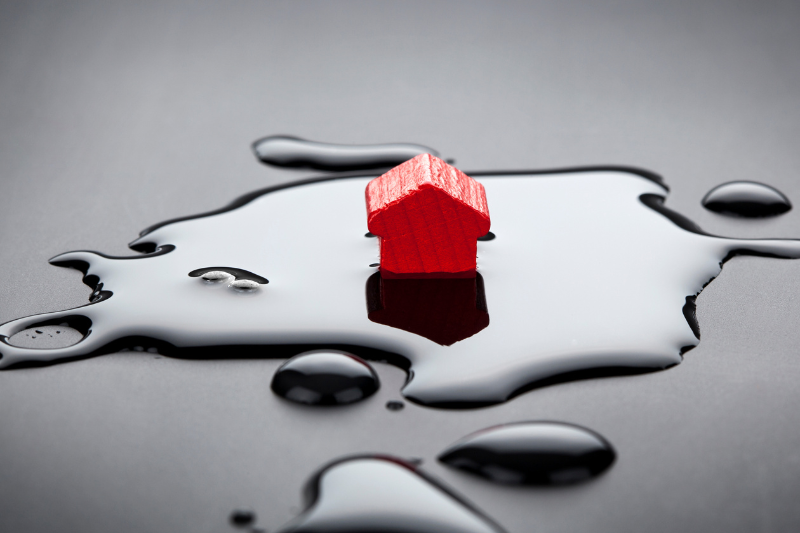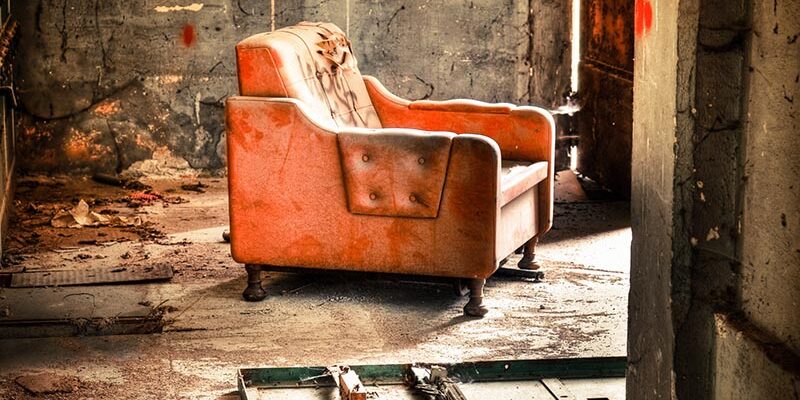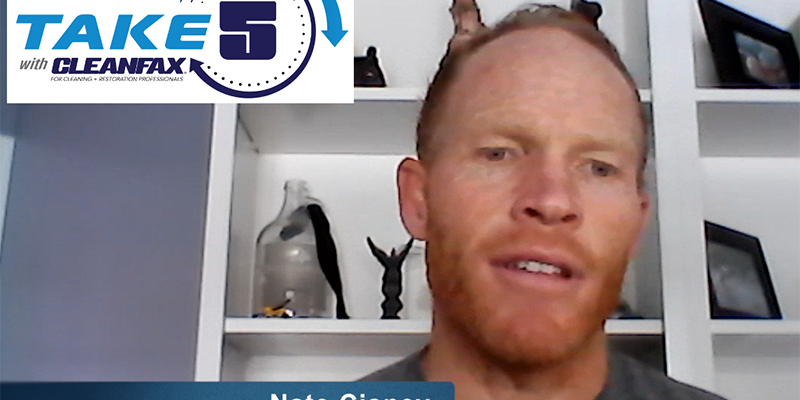Replace or Repair: A Guide for the Flooring Restoration Contractor

By Frederick M. Hueston
Restoration contractors, carpet cleaners, and other disaster-related contractors have difficulty in cases where flooding occurs due to the fact that it is difficult to determine if a floor needs to be replaced or if it can be repaired. This is going to be a question that will need to be answered in light of Hurricane Ian, the recent Hurricane that hit Florida. To determine the extent of damage and to ultimately settle on a value for the claim, a throughout understanding of what can cause these damages is necessary.
The following article will help you understand what can happen when a stone or tile floor is flooded.
Breaking Down the Impact of Flooding
As an expert witness, I have been involved in many cases where flooding is an issue. Many times, the wrong process is used for cleaning which can cause greater, and perhaps irreversible, damage to the floor.”¯
In addition, many insurance companies will not pay claims due to the lack of visual evidence and will sign off on a claim only to find that additional underlying problems didn’t manifest visually until months afterward. If you have a client or work with an insurance company, please contact an expert who is thoroughly familiar with these types of issues and can help with your case.
Flooding can wreak havoc on natural stone and tile floors. Flood waters not only contain water that can harm and destroy marble, granite, limestone, terrazzo, and tile flooring, but they also contain debris and dirt as well as other harmful contaminates that can cause staining and other problems. Many times, the damage that is done by the flooding will not show up until months later.
As a stone forensic expert, I deal with problems such as those resulting from flooding on a frequent basis. The good news is that not all of the problems that result necessarily mean the floor must be replaced. There are some tests that can be performed by forensic experts to see if it is possible to reverse the damage rather than having to resort to costly replacement. Following are some of the most common problems that may occur.
Efflorescence”¯
Efflorescence appears as a white powdery residue on the surface of the stone. It is a common condition on stone, terrazzo, and tile installations when the stone is exposed to a large quantity of water, such as flooding. This powder is a mineral salt from the setting bed. It can be removed by cleaning professionals, but many times will come back after the initial cleaning. The stone will continue to effloresce until it is completely dry. This drying process can take several days to many months. A major mistake that is often made—even by some professionals—is to apply a sealer to the stone or tile. The reason this is a major mistake is the sealer will block the escape of moisture which can cause further problems such as flaking and spalling of the stone.
The stone or tile should be evaluated for moisture by a professional stone and tile forensic expert to determine the extent of residual moisture.
Sub-florescence
Sub-florescence is what happens when the mineral salts migrate and do not make it all the way to the surface. In the efflorescence condition above, the salts are deposited on the surface of the stone. In sub-florescence, the salts crystallize just below the surface, causing stress within the pores of the stone. The result is a condition known as spalling, which appears as pits on the surface of the stone. Sub-florescence is very common on green marbles and on almost all stone and tile surfaces where flooding has occurred. The stone or tile can be tested for salts by a qualified professional stone and tile expert.
Yellowing and Discoloration
Many light-colored stones contain naturally occurring deposits of iron. Iron is a mineral found in stone and can occur randomly throughout the stone. If iron is present, it will begin to oxidize when exposed to water or other oxidizers such as acids and household bleach. Stone can remain for years without yellowing, then over time may slowly turn yellow and, in severe cases, may turn completely brown. This oxidation process is accelerated when the stone is saturated with water such as from a flood. This process of oxidation is similar to the rusting of metal. If you expose a brand-new nail to water and air it will turn brown and rust. The same process is occurring with the iron in the stone. If water and/or air are eliminated, the iron will not oxidize. This is the reason certain white marbles suddenly turn yellow. The process is difficult to reverse, and replacement of the stone may be necessary if not properly evaluated and treated with the proper removal technique.
Warping
Several types of thin stone tiles are very susceptible to warping when exposed to flooding. Many of the green marbles and a few agglomerate marbles are notorious for this warping condition. Many installers have had the surprise of finding that their tile installation has mysteriously become warped overnight. Why does this happen and can it be prevented? Warping is caused by water. Green marble set with any water-based material will have a tendency to warp. The mechanism of why the tile warps is somewhat of a mystery. Some believe that the water fills the pores of the stone and when the water evaporates the orientation of the stone’s crystal changes and causes it to warp. Whatever the reason, one thing is for sure, green marble can warp when set with water-based materials or exposed to copious amounts of water.
The cure for this is simple: Once a green marble tile warps, it is difficult to repair. Attempts have been made to grind the tile flat, but this usually fails since additional water is introduced during the grinding process. The green simply warps again. In order to determine if the stone can be repaired, a detailed investigation must be made. This may include removing a tile to determine the type of setting bed, etc.
Erosion
Erosion is a condition found when stone is exposed to constant amounts of water. This is especially true with marble that is used in water fountains. While marble is a very decorative material, it is one of the worst materials to use in or around water. Marble is composed of calcium carbonate. Calcium carbonate is a water-soluble mineral. Quite simply, this means it will dissolve in water (Want proof? Visit the Grand Canyon). Erosion can be recognized by a slow deterioration of the stone surface. With polished stone, the polish will be worn off. In older installations, the stone may become very soft, and brittle and in extreme conditions, it will powder.
If any architects or designers are reading this article, I urge you not to specify marble for water fountains. If you do, plan on very high maintenance costs and plan on replacement in about five to ten years, if not sooner.
Hollow Sounds
I constantly get calls from insurance adjusters, contractors, attorneys, etc. about hollow sounds that occur after a floor has been exposed to flooding. The fact is those hollow sounds that occur on a floor are NOT caused by flooding. The reason is simple: most setting materials are made from Portland cement. It is a well-known fact that Portland cement has hydraulic properties. In other words, it cures in the presence of water. If your client is complaining about hollow sounds and is trying to blame it on a flood, keep this in mind. An inspection and evaluation of the floor are necessary to determine the extent of the hollow sounds which can cause deboning and other issues.
Mineral Crusts or Lime Putty
Mineral crusts or lime putty can be recognized by its white crust-like formation on stone surfaces. These crusts are often found on outdoor
stone stairs, water fountains, interior floors, and other areas where stone is exposed to flooding. The crusts are a deposit of hard mineral salts consisting of calcium and magnesium. These minerals originate from the soil, setting bed, or from the water itself. These salts are similar to efflorescence in that they are a mineral. They differ in that they form a hard crust that can be difficult to remove.
Conclusion
Having a stone or tile floor that has been subjected to flooding evaluated by an expert is highly recommended. It may make all the difference. For example, white marble can turn yellow months after the flood, tiles can become cracked due to swollen subfloors that are not visible to the naked eye, and so on and so forth. Preparing for these possibilities is the key to repairing floor damage before it is irreparable.
Fred Hueston, aka, “œDr Fred“ has been a floor professional for over 40 years. To read more about him and his company visit StoneForensics.com.












